Walnut is a unique natural 'jewel' and has long been appreciated for its versatility and aesthetic value. In the past it replaced the expensive peas brought from the colonies and thanks to its success, it has remained a favourite with both carpenters and furniture users. What makes it special in appearance is the contrast of colours it displays. Its specific brown has a remarkable beauty and the furniture does not need staining but only protection. However, the natural colour of walnut differs according to its origin. The native walnut is lighter in colour, uneven, with yellow, green and reddish inserts, while the walnut native to the USA is dark brown, more even and with purplish hues. What other differences are there between the two species and how can they be identified? What is the processing behaviour and uses of walnuts, find out below.

Walnut - name, origins, spread
Both species of walnut belong to the family Juglandaceae, a family comprising around 50 species of deciduous trees native to Europe, Asia and the Americas. All species have in common the production of different types of nuts, including our common walnuts or pecans. The name of the family comes from the Roman god Jupiter, who legend says fed on walnuts throughout his earthly existence. The best known species as a source of wood are the English walnut (Juglans regia) and the American (Juglans nigra).
European walnutThe English walnut, also called English or common walnut, is a species that grows both cultivated and wild. It is protected and can only be cut down with permission from the Forestry Department, even if it grows in your own garden. In English you will find it as Persian walnut, English walnut, French walnut, Madeira walnut or common walnut. In French it is walnut or walnut tree, in Italian walnut or hickory, in Spanish walnut, European walnut or Spanish walnut, and in German Nussbaum, Echte Walnuss or Baumnuss. It is native to the area stretching from the eastern Balkans to the Himalayas and south-west China, with Persia (today's Iran) considered in many documents to be the starting point. It was brought to Europe by the Romans and has been cultivated ever since.
American walnut, also known as black walnut, is native to North America, growing mainly in the eastern US. In English you find it as Black walnut or American black walnut, nblack walnut or American walnut in French, black walnut in Italian, American black walnut in Spanish and Schwarznussbaum in German. Unlike the European walnut, grown worldwide for its nuts, the American walnut is grown primarily for its wood. The American walnut has also been grown in Europe for 200 years, brought over by English traders. It was they who brought the European walnut to America, which is now grown extensively for walnuts. In fact, the US is the world's second largest producer, after China, which produces more than half of the world's total walnut crop.
The first comparison between the European walnut and the American walnut
The two trees, the European and American walnut, are not very different in appearance. There are, however, some small differences that help identify them. The European walnut reaches heights of 25-35 m, while the American walnut is taller and can exceed 40 m in height. The trunk of the European walnut is thicker, often reaching diameters of 1.5-2 m, while the American walnut hardly exceeds 1 m in diameter. The bark of the European walnut is greenish-brown and smooth when young, becoming silvery-grey and beaded when mature. The American walnut's bark is brownish grey and heavily diamond-shaped. The crown of the European walnut is predominantly round, while the American walnut is elongated, with only those growing solitary developing round crowns.
The leaves are similar and similarly arranged on the branch, but the hickory leaves are longer, narrower and more numerous. They have both female and male flowers that bear round fruit covered with a green shell in European walnut and brownish green in American walnut, which open in late summer. The nuts fall in autumn and the loose shell falls off the nut. A tough horny shell remains to protect the kernel. This is very hard and darker in the American walnut, and inside there are hard walls separating the kernel. European walnuts crack more easily, the kernel is lighter in colour, can be removed from the inside and whole and taste sweeter. American walnuts crack very hard, the kernel is removed from the inside in small pieces, is darker in colour, has an astringent taste and a strong telluric flavour.
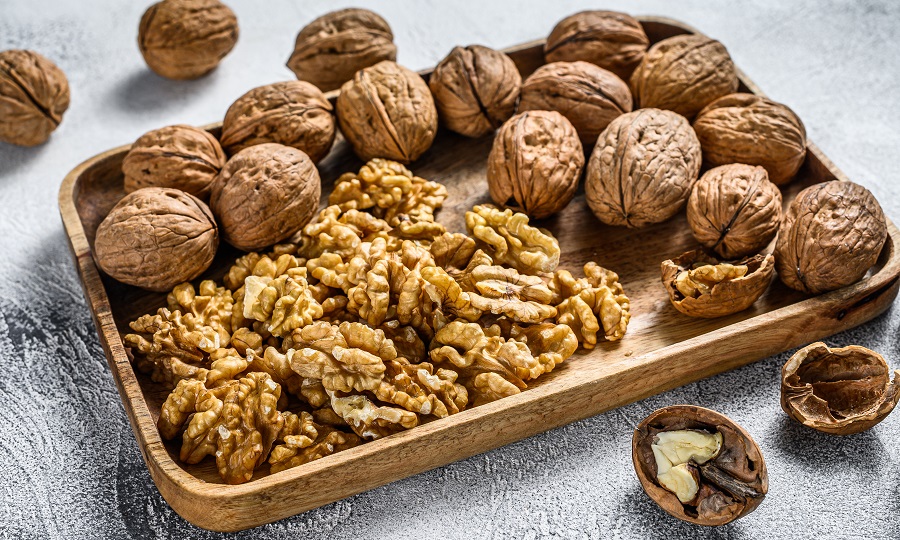
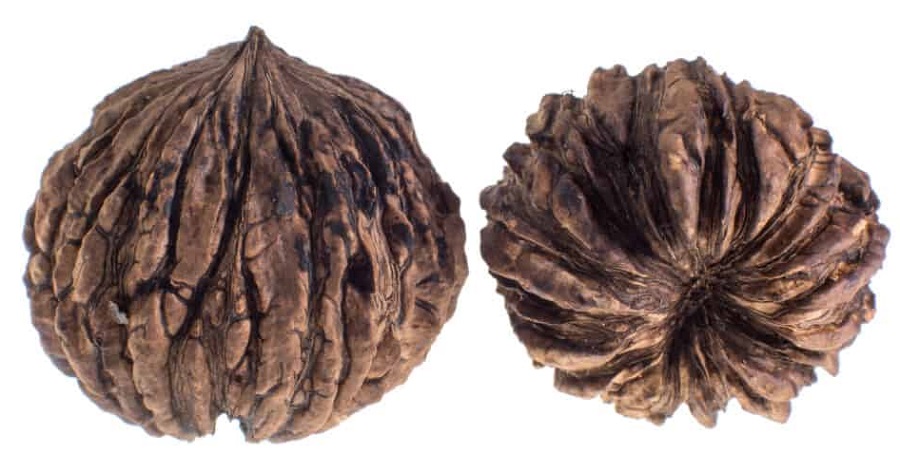
Main differences between European and American walnut wood
Both species of walnut are used in furniture production. There are many similarities between the appearance and behaviour of the wood, but also differences that lead to the choice of one species over the other.
In cross-section the general appearance is similar, with distinct annual rings, semi-round pores, large and numerous in early wood, decreasing in size and number in late wood. The medullary rays, which give a natural sheen to walnut wood, are visible to the naked eye and normally spaced. You can clearly see the difference between sapwood and heartwood, the sapwood being very light to whitish and the heartwood brown.
Differences between species occur mainly in heartwood colour. In the European walnut the colour is more uneven, varying from very light brown to almost black, with very different coloured inserts, whereas in the American walnut the colour is more uniform, dark brown with greyish and purplish iridescence. We could say that the main visual difference is the colouring, the distinctive shade palettes of the two species.

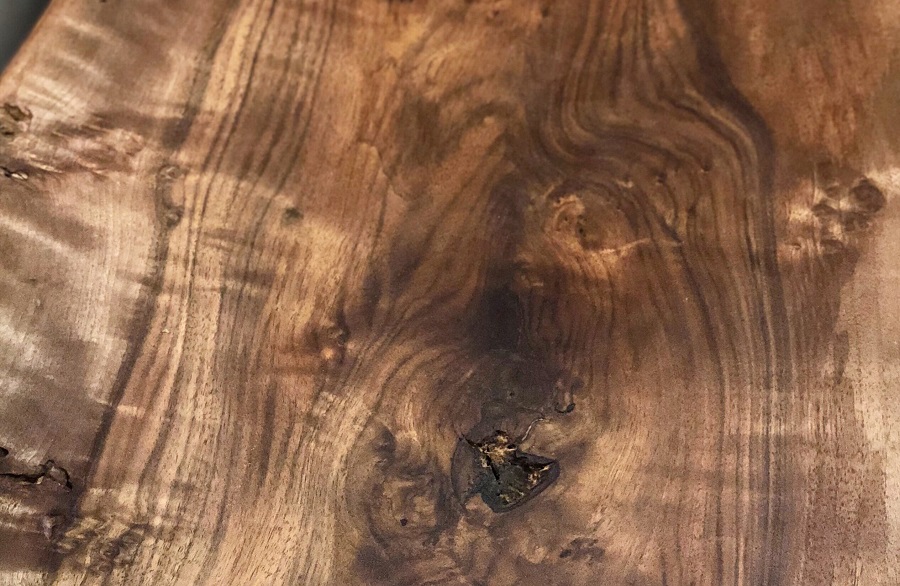
The American walnut's grain is generally straighter and more regular than that of the European walnut, which often has interesting patterns of uneven grain. The European walnut's fibre is slightly finer than that of the American walnut. Both species have knots, the fibre being irregular in those areas and more difficult to process.
The European walnut is heavier than the American walnut, with a density of 640 kg/m³ compared to 610 kg/m³ for the American walnut. However, American walnut is more durable, more elastic and more resistant to abrasion than European walnut. The rot resistance of American walnut is very good, whereas European walnut is rated as average. As a result, American walnut will resist much better in damp environments (bathroom, kitchen) than European walnut. However, both are equally susceptible to insect attack.
Being more elastic, American walnuts can be steamed and bent more easily than European walnuts, which tend to crack. Its durability, impressive stability and better abrasion resistance make it more suitable for use on floors. It does not mean that European walnut is not good and its qualities are insufficient but that compared to American walnut, its strength is lower.
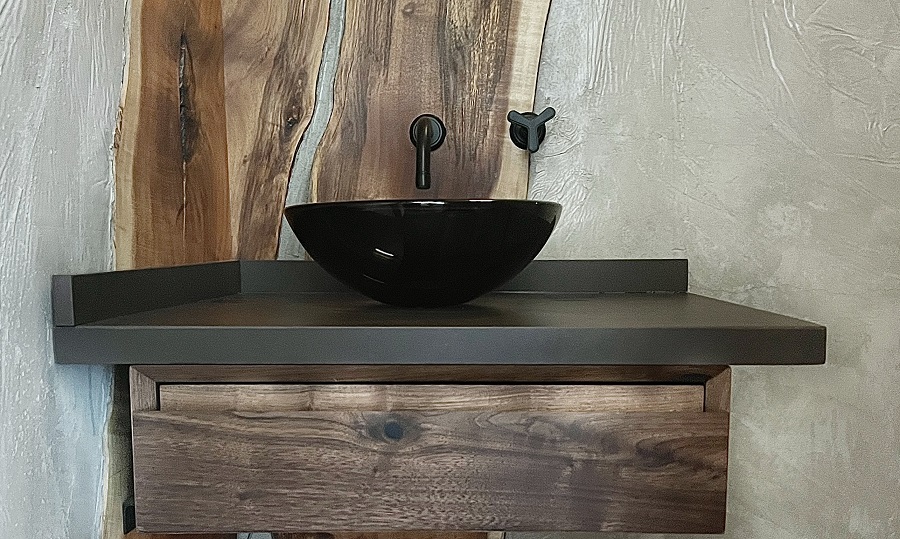
Processing and uses
If the grain is straight, both walnut species are easy to process. During processing it gives off a faint specific odour. Problems occur in the knot area or when the fibre is irregular. European walnut is easier to carve, American walnut is easier to carve. turn better. The American walnut can be bent by steam. Both species glue, colour and varnish without problems. It is not recommended to stain them because it loses the spectacular individuality of its natural colour. The most suitable finish is oiled because it brings out the fibre and colour very well. Tung oil is the most used resulting in a silky, warm and smooth look.
Both species of wood are used for making furniture, veneer, various carved or turned objects and musical instruments. Walnut has been used in the manufacture of rifle beds since the early days of rifle making, and is now frequently used to decorate luxury cars and yachts.
Walnut is one of the most versatile hardwood species to work with. Regardless of the walnut's origin, American or European, the wood that comes from this tree is renowned for its durability and overall dark colour appearance. But this wood has a real charm, because up close, it has a real contrast of light and dark, making it particularly appealing.
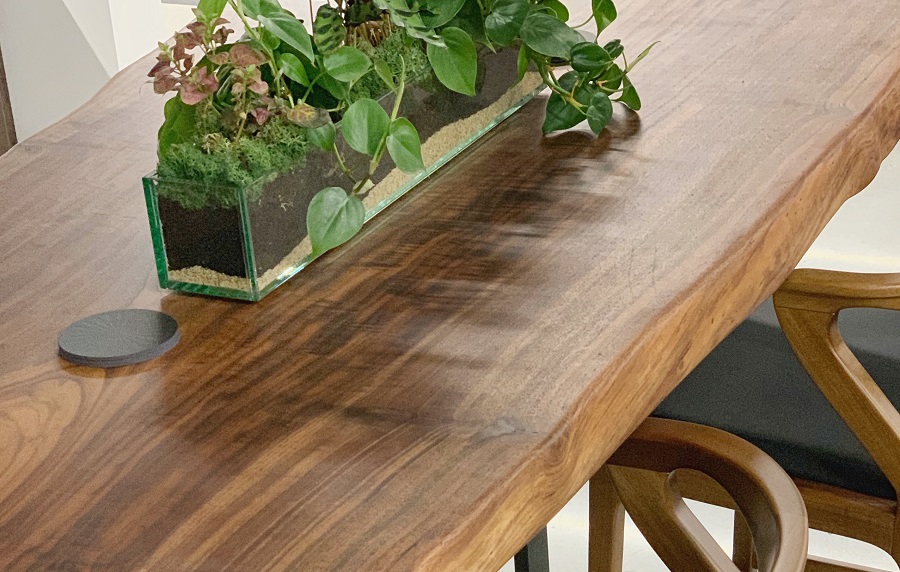
I hope you find the above information useful. As usual, additions are welcome. And if you have any questions or queries, please leave them in the space below. I'm sure I'll reply.
Do you want to know about the wood of a particular species? Search here, it is very possible to find them!

















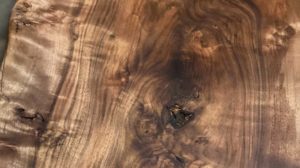








Add comment